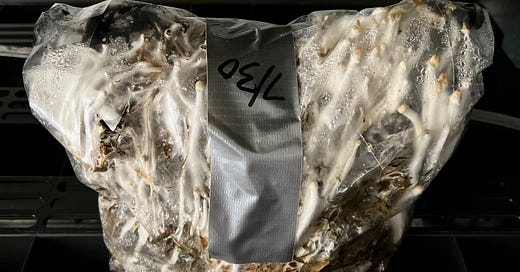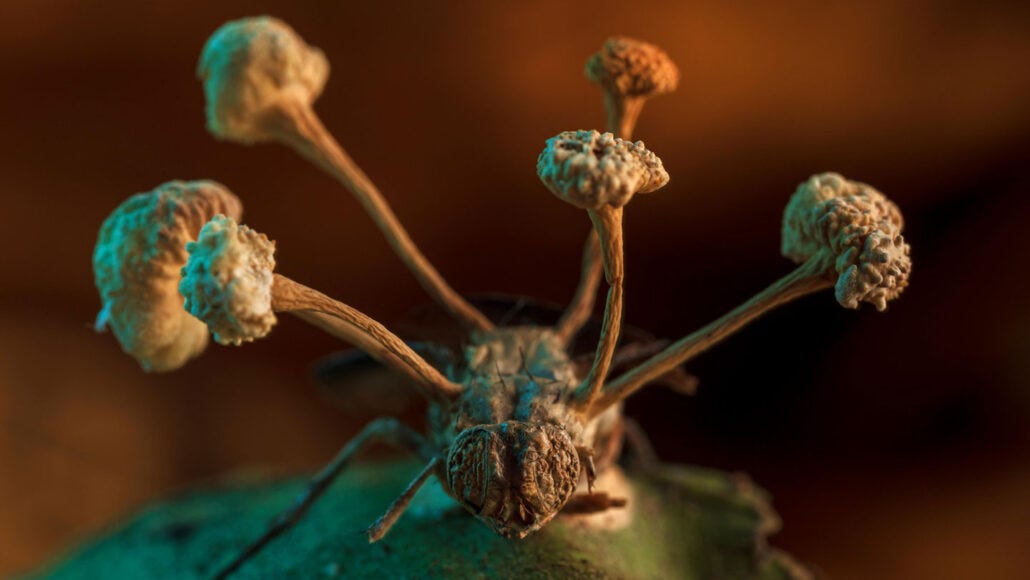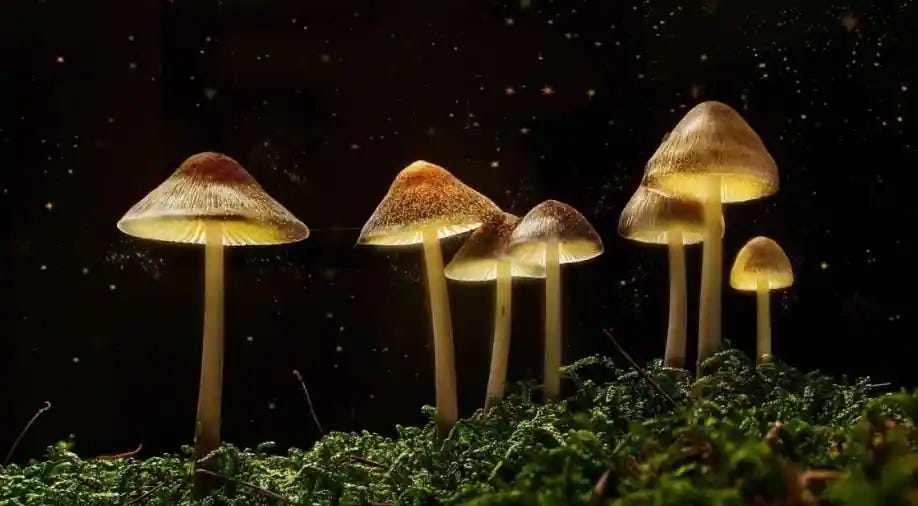Fungi Friday fam, we’re back with yet another release of Fungi Friday! Checked in on our little fungi last weekend and so far so good, check it out:
Looking pretty good, huh? We ended up moving them from incubation into fruiting, so fingers crossed our small batteries performed well enough this past week. There’s even a chance we’ll show up down there this week and there might just be a few mushrooms sprouting!
Plan this weekend will be to install the two new batteries and get the other half of our pink oyster spawn packed. Blue oyster spawn shows up on Friday (might have even already arrived as you’re reading this!) Hoping we’ll have some exciting pictures for you come next week… but we shall have to wait and see.
Let’s get into this weeks stories.
An award-winning photo captures a ‘zombie’ fungus erupting from a fly
Article numero uno of the week isn’t actually even focused around the article, but instead the image. And how cool it is? This award winning image, taken in the Peruvian Amazon by biologist and photography Roberto Garcia-Roa, captures the fruiting bodies of a parasitic fungus, emerging from the lifeless body of an infected fly in the Peruvian rainforest. It has recently taken home a prize as the winner of the 2022 BMC Ecology and Evolution photography competition.
The fungus erupting from the fly belongs to the genus Ophiocordyceps, a diverse collection of parasitic fungi known as “zombie fungi,” due to their ability to infect insects and control their minds. The article goes into a bit more detail on its backstory, but we here at Fungi Friday mostly wanted to simply feature it for it’s haunting, yet powerful visual. There is no shortage of amazing sites out there in nature!
They say that fungi may be the key to getting rid of cigarette butts
Did you know that a single cigarette butt can contaminate up to 40 liters of water?
“It all started through an NGO dedicated to cleaning the beaches, because they did not know what to do with all that toxic material and they contacted us to find a solution,” said the biologist and fellow of the National Council for Scientific and Technical Research (Conicet), Pilar Núñez.
The most pollutant part of cigarettes are tar and nicotine that stick to the butt after combustion and in order to clean them, it is necessary to apply a process defined as “bioremediation” that uses living organisms that eliminate toxins from the material. This is where the fungi come in. Over the past seven years, Núñez and his team have been studying what are known as “white rot” fungi, and their results have been proven. They can degrade and feed on wood or paper, and by putting them in contact with cigarette butts, they eat the cellulose acetate of the filter, cleaning the toxic environment.
Week after week, it seems we find more and more items that some sort of fungi out there can eat. Whether it be oil spills, dead trees, or in this case, cigarette butts. And week after week, these fascinating creatures never cease to amaze in terms of their ability to benefit the rest of the living world!
Magic mushrooms likely to be world's most effective tool against depression
And finally, our last feature of this week brings us the results from a study out of the Centre for Psychedelic Research at Imperial College London, and they seem quite promising. In a study of 60 individuals receiving treatment resistant depression, the researchers claim to have used brain scans to figure out how psilocybin influences the brain to produce therapeutic effects.
According to the latest findings, which were compiled from two separate studies, patients who responded to psilocybin-assisted therapy exhibited increased brain connectivity not just during treatment but also for up to three weeks afterward. The team claims that the results, which were replicated in two studies and were published today in the journal Nature Medicine, represent a positive development for psilocybin therapy.They say that because depression can cause rigid and constrained patterns of brain activity, psilocybin may be able to help the brain escape this impasse in a way that conventional treatments are unable to. The drug development expert stated that although more data from ongoing clinical trials was required to prove the medication's efficacy, preliminary findings were encouraging.
Want even more? Here are some other interesting, mushroom focused reads of the week:
As always, thank you for reading this weeks edition of Fungi Friday’s! If you enjoyed what you found, please feel free to forward to friends also interested in the Fungi Community!
And if you were forwarded this post and enjoyed what you found, please subscribe below:




